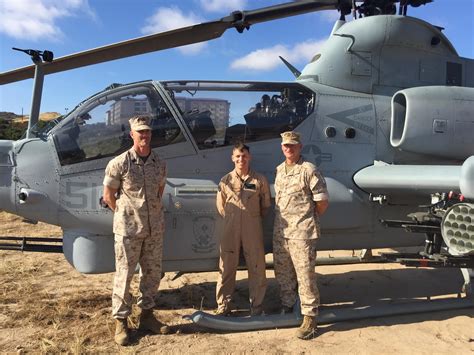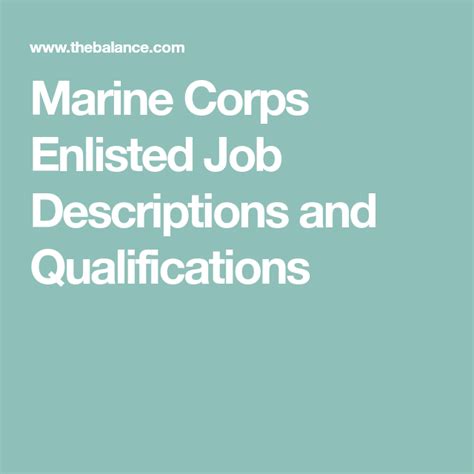The United States Marine Corps operates a variety of aircraft to support its mission of conducting expeditionary and amphibious operations. The Marine Corps' aviation component is known for its versatility and flexibility, with aircraft capable of performing a range of tasks from close air support and transport to reconnaissance and electronic warfare. At the heart of Marine aviation are several key aircraft types, each designed to fulfill specific roles within the Corps' overall operational strategy.
Key Points
- The Marine Corps operates the F-35B Lightning II, a fifth-generation multirole fighter aircraft, for air superiority and ground attack missions.
- The AV-8B Harrier II is used for close air support, providing direct firepower in support of ground units.
- The MV-22 Osprey serves as a primary transport aircraft, capable of vertical takeoff and landing (VTOL) and providing significant improvements in speed and range over traditional helicopters.
- UH-1Y Venom and AH-1Z Viper helicopters are utilized for utility, assault, and attack roles, respectively, offering a range of capabilities from personnel transport to anti-armor operations.
- Marine Corps KC-130J tanker aircraft support air-to-air refueling and transport missions, enhancing the endurance and reach of Marine aviation assets.
Fixed-Wing Aircraft

The Marine Corps’ fixed-wing aircraft fleet is dominated by the F-35B Lightning II, which is the short takeoff and vertical landing (STOVL) variant of the F-35 family. This advanced fighter jet is equipped with cutting-edge avionics and stealth technology, making it highly effective in both air-to-air combat and air-to-ground strike missions. The F-35B’s capability to operate from amphibious assault ships and short, expeditionary airfields makes it particularly valuable for Marine Corps operations.
F-35B Lightning II Capabilities
The F-35B brings unprecedented capabilities to the Marine Corps, including advanced sensors, network-centric warfare capabilities, and the ability to carry a range of precision-guided munitions. Its STOVL capability allows the aircraft to operate from forward bases, reducing the reliance on large, fixed airbases and enabling more flexible and rapid response options for commanders.
Rotary-Wing Aircraft

In addition to its fixed-wing assets, the Marine Corps operates a range of rotary-wing aircraft, including the MV-22 Osprey, UH-1Y Venom, and AH-1Z Viper. These helicopters and tiltrotor aircraft provide the Corps with lift, assault, and attack capabilities that are essential for expeditionary warfare.
MV-22 Osprey
The MV-22 Osprey is a tiltrotor aircraft that combines the vertical takeoff and landing capabilities of a helicopter with the speed and range of a turboprop airplane. This makes it an invaluable asset for transporting troops, equipment, and supplies over long distances, especially in areas where traditional helicopter range and speed limitations would be a hindrance.
UH-1Y Venom and AH-1Z Viper
The UH-1Y Venom is a utility helicopter used for a variety of missions, including transport, medical evacuation, and combat operations. The AH-1Z Viper, on the other hand, is an attack helicopter, equipped with missiles, rockets, and cannon systems, making it a formidable platform for providing close air support and conducting anti-armor operations.
| Aircraft Type | Primary Role | Notable Capabilities |
|---|---|---|
| F-35B Lightning II | Multimission Fighter | STOVL, Advanced Avionics, Stealth Technology |
| AV-8B Harrier II | Close Air Support | VTOL, Precision-Guided Munitions |
| MV-22 Osprey | Transport/Tiltrotor | Long Range, High Speed, VTOL |
| UH-1Y Venom | Utility Helicopter | Transport, Medical Evacuation, Combat Operations |
| AH-1Z Viper | Attack Helicopter | Anti-Armor, Close Air Support, Advanced Fire Control |

Future Developments
Looking to the future, the Marine Corps continues to evolve its aviation capabilities, with a focus on integrating new technologies and aircraft into its fleet. The ongoing development and fielding of advanced aircraft, coupled with investments in unmanned systems and digital networking, will further enhance the Corps’ ability to conduct expeditionary operations in a rapidly changing global environment.
What is the primary role of the F-35B in the Marine Corps?
+The F-35B serves as a multirole fighter, providing air superiority and ground attack capabilities, with the added benefit of short takeoff and vertical landing (STOVL) operations.
What are the advantages of the MV-22 Osprey over traditional helicopters?
+The MV-22 Osprey offers significant improvements in speed, range, and payload capacity compared to traditional helicopters, making it more effective for long-distance transport and assault missions.
How does the Marine Corps plan to integrate unmanned systems into its aviation operations?
+The Marine Corps is exploring the use of unmanned aerial vehicles (UAVs) for reconnaissance, surveillance, and potentially strike missions, with the aim of enhancing situational awareness and reducing risk to manned aircraft.
Meta Description: Explore the diverse range of aircraft operated by the United States Marine Corps, including the F-35B Lightning II, MV-22 Osprey, and AH-1Z Viper, and learn about their roles and capabilities in supporting expeditionary and amphibious operations.



